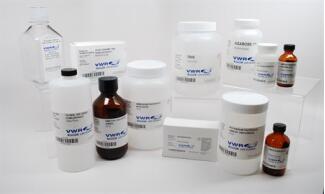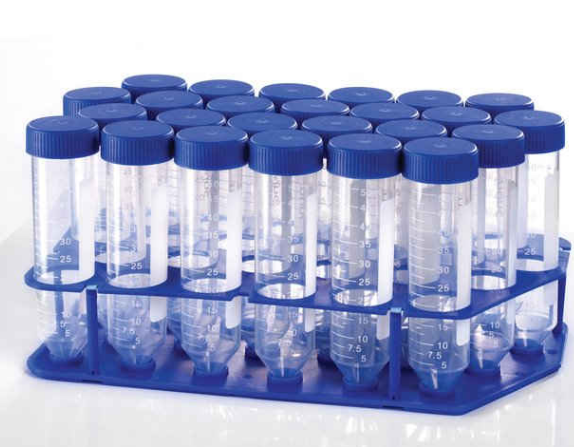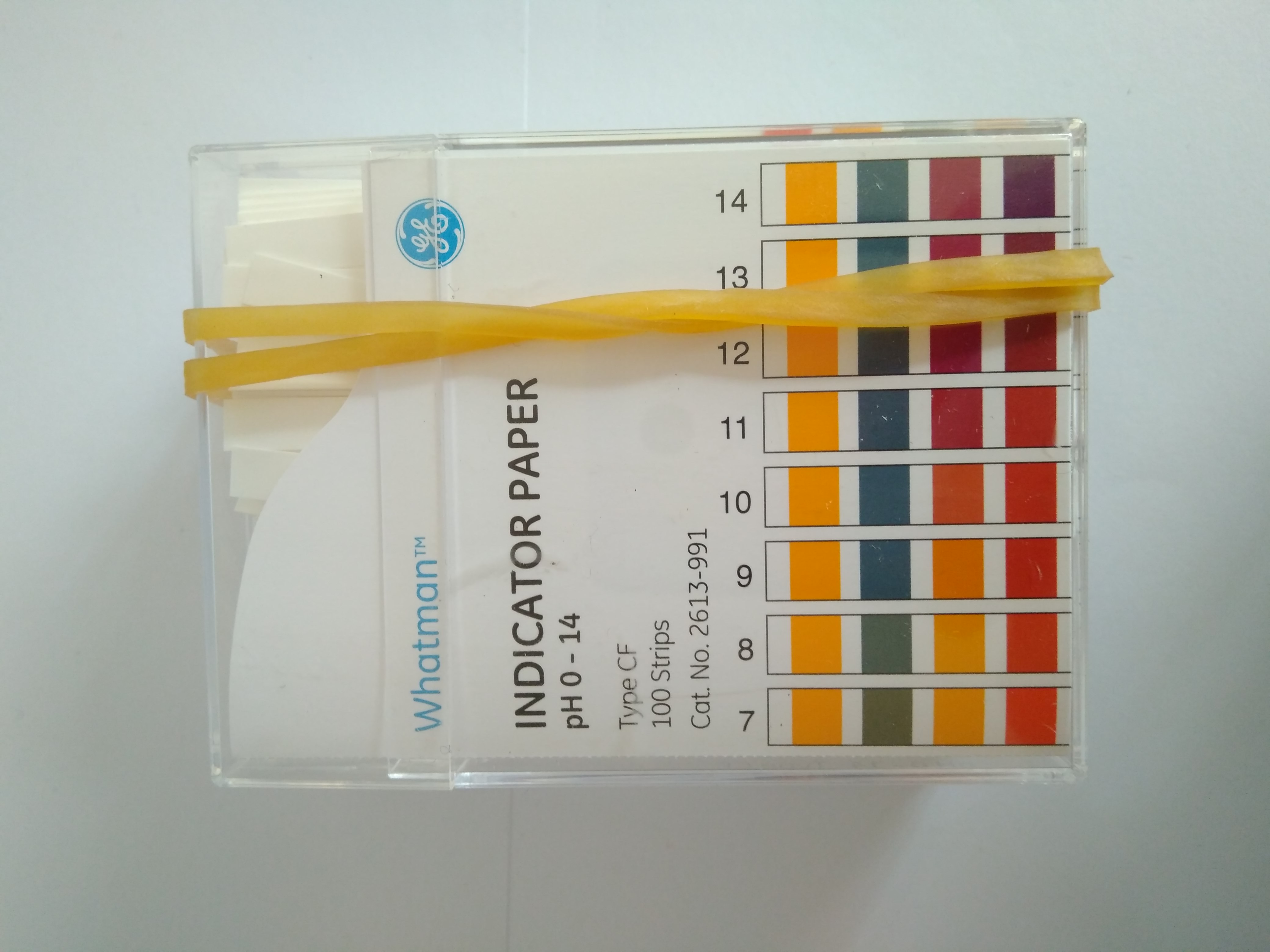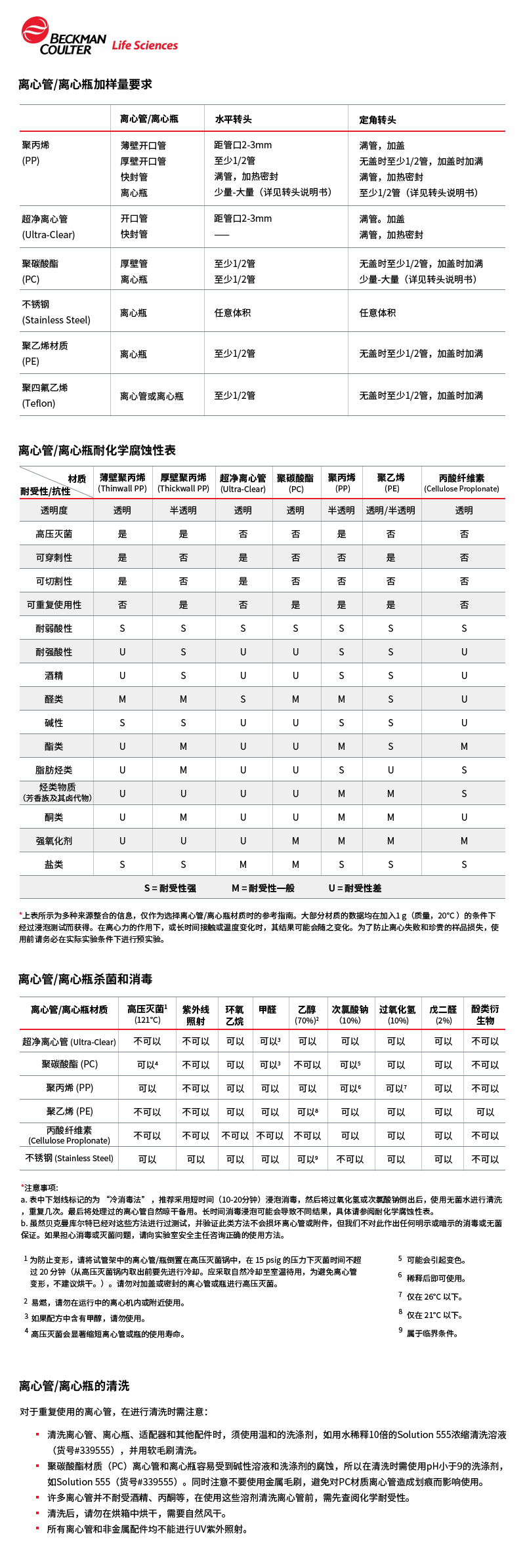详细描述
3-(Boc-氨基甲基)哌啶; 别名: (3-Piperidinylmethyl)-carbamic acid 1,1-dimethylethyl ester (Piperidin-3-ylmethyl) carbamic acid tert-butyl ester 3-叔丁氧羰基氨甲基哌啶; 品牌:Aldrich
| 含 量:95% | 产品规格:10G, 1G | 产品包装:瓶装 |
| 品 牌:Aldrich | 产 地:原装进口 | 价 格:元/克 |
中文名:3-(Boc-氨基甲基)哌啶
英文名:3-(Boc-aminomethyl)piperidine
别名: (3-Piperidinylmethyl)-carbamic acid 1,1-dimethylethyl ester (Piperidin-3-ylmethyl) carbamic acid tert-butyl ester 3-叔丁氧羰基氨甲基哌啶
CAS 号:142643-29-6
MDL 号:MFCD01632454
分子式:C11H22N2O2
分子量:214.30
熔点:60-70 C(lit.)
货号:653896
品牌:Aldrich
产品规格:10G, 1G
产品包装:瓶装
产品起订量:1
产地:原装进口
Aldrich一直以来都是全球有机和无机化学领域的领导者。我们通过综合的创新能力和完整的产品线为化学研究、医药研发、材料研究等众多领域提供包括化学结构单元、试剂、先进材料和稳定同位素在内的数以十万计的产品,同时我们也为您的基本实验提供基础试剂和实验室溶剂产品。每年会有超过3000余种全新化合物会出现在我们的目录中。
上海金畔生物科技有限公司
文章号:2377527-2377527
邮箱:sales@jinpanbio.com
订购热线:15221999938
微信:jinpanbio
试卤灵β-D-半乳糖吡喃糖苷 荧光橙 CAS 95079-19-9-AAT Bioquest荧光染料
上海金畔生物科技有限公司代理AAT Bioquest荧光染料全线产品,欢迎访问AAT Bioquest荧光染料官网了解更多信息。
试卤灵β-D-半乳糖吡喃糖苷 荧光橙 CAS 95079-19-9价格 1386
产品规格
产品货号
| Ex (nm) | 571 | Em (nm) | 584 |
| 分子量 | 375.33 | 溶剂 | DMSO |
| 存储条件 | 在零下15度以下保存, 避免光照 |
产品基本信息
产品名称:试卤灵β-D-半乳糖吡喃糖苷 荧光橙
CAS:95079-19-9
储存条件:-15℃避光防潮
保质期:12个月
产品物理化学光谱特性
分子量:375.33
溶剂:DMSO
激发波长(nm):571
发射波长(nm):585
产品介绍
试卤灵β-D-半乳糖吡喃糖苷 荧光橙是美国AAT Bioquest生产的用于检测β半乳糖苷酶的试剂,试卤灵β-D-吡喃半乳糖苷是一种荧光半乳糖苷酶底物,当与该酶相互作用时会产生红色荧光产物。该酶底物广泛用于半乳糖苷酶抑制剂的高通量筛选。金畔生物是AAT Bioquest的中国代理商,为您提供优质的试卤灵β-D-半乳糖吡喃糖苷 荧光橙。
点击查看光谱
参考文献
Ever-fluctuating single enzyme molecules: Michaelis-Menten equation revisited
Authors: English BP, Min W, van Oijen AM, Lee KT, Luo G, Sun H, Cherayil BJ, Kou SC, Xie XS.
Journal: Nat Chem Biol (2006): 87
Crystallization of beta-galactosidase does not reduce the range of activity of individual molecules
Authors: Shoemaker GK, Juers DH, Coombs JM, Matthews BW, Craig DB.
Journal: Biochemistry (2003): 1707
Measurement of enzyme kinetics using a continuous-flow microfluidic system
Authors: Seong GH, Heo J, Crooks RM.
Journal: Anal Chem (2003): 3161
beta-galactosidase assay using capillary electrophoresis laser-induced fluorescence detection and resorufin-beta-D-galactopyranoside as substrate
Authors: Eggertson MJ, Craig DB.
Journal: Biomed Chromatogr (1999): 516
Microchip device for performing enzyme assays
Authors: Hadd AG, Raymond DE, Halliwell JW, Jacobson SC, Ramsey JM.
Journal: Anal Chem (1997): 3407
Synthesis of a new substrate for detection of lacZ gene expression in live Drosophila embryos
Authors: Minden JS.
Journal: Biotechniques (1996): 122
Expression of beta-galactosidase under the control of the human c-myc promoter in transgenic mice is inhibited by mithramycin
Authors: Jones DE, Jr., Cui DM, Miller DM.
Journal: Oncogene (1995): 2323
A sensitive competitive ELISA for 2,4-dinitrophenol using 3,6-fluorescein diphosphate as a fluorogenic substrate
Authors: Huang Z, Olson NA, You W, Haugland RP.
Journal: J Immunol Methods (1992): 261
相关产品
| 产品名称 | 货号 |
| 试卤灵 α-D-吡喃半乳糖苷 荧光橙 | Cat#14021 |
Pall颇尔滤膜 66088 FILTER GLS FIB THK 293MM PK25
Pall颇尔滤膜 66088 FILTER GLS FIB THK 293MM PK25 353 2822
Amresco 0528-500G CRYSTAL VIOLET 结晶紫
Amresco 0528-500G CRYSTAL VIOLET 结晶紫
WWP1 Polyclonal Antibody-Invitrogen-赛默飞世尔科技Thermofisher
- 详细信息
- 询价记录
- 相关实验
-
货号: PA542293 抗体名: WWP1 Polyclonal Antibody 靶点: WWP1 浓度: 0.6 mg/ml 应用范围: Immunocytochemistry, Immunofluorescence, Immunohistochemistry (Paraffin), Western Blot 宿主: Rabbit 适应物种: Bovine, Canine, Equine, Guinea Pig, Human, Mouse, Porcine, Rabbit, Rat 克隆性: 单克隆 保存条件: -20° C, Avoid Freeze/Thaw Cycles 形态: Liquid 亚型: IgG 免疫原: Synthetic peptide directed towards the N-terminal of human WWP1 规格: 100 µl

甘油检测试剂盒 K-GCROL 70 assays (manual) / 700 assays (microplate)
甘油检测试剂盒
英文名:Glycerol Assay Kit
货号:K-GCROL
规格:70 assays (manual) / 700 assays (microplate)
市场价: 1808元
分析物意义:常见食品组分,或作为甜味剂,或用于改善口感
Megazyme检测试剂盒优点:新型的药片模式,性质更稳定,反应快
The Glycerol test kit is a simple, reliable, rapid and accurate method for the measurement and analysis of Glycerol in beverages, foodstuffs and other materials.
Suitable for manual and microplate formats.
UV-method for the determination of Glycerol in foodstuffs,
beverages and other materials
Principle:
(glycerokinase)
(1) Glycerol + ATP → L-glycerol-3-phosphate + ADP
(pyruvate kinase)
(2) ADP + PEP → ATP + pyruvate
(L-lactate dehydrogenase)
(3) Pyruvate + NADH + H+ → L-lactic acid + NAD+
Kit size: 70 assays (manual) / 700 (microplate)
Method: Spectrophotometric at 340 nm
Reaction time: ~ 5 min
Detection limit: 0.34 mg/L
Application examples:
Wine (and grape juice), beer, spirits, vinegar, marzipan, fruit juices,
soft drinks, toothpaste, honey, tobacco, paper (and cardboard),
cosmetics, pharmaceuticals, soap and other materials (e.g. biological
cultures, samples, etc.)
Method recognition:
Methods based on this principle have been accepted by OIV and
MEBAK
Advantages
- Novel tablet format for increased stability
- Very competitive price (cost per test)
- All reagents stable for > 2 years as supplied
- Very rapid reaction
- Mega-Calc™ software tool is available from our website for hassle-free raw data processing
- Standard included
- Suitable for manual and microplate formats
FAQ解答
Q1. There is an issue with the performance of the kit; the results are not as expected.
If you suspect that the Megazyme test kit is not performing as expected such that expected results are not obtained please do the following:
- Ensure that you have tested the standard sample that is supplied with the Megazyme test kit.
- Send the results of the kit standard, blank samples and the results obtained for your sample, in the relevant MegaCalc spreadsheet (if available) to Megazyme (cs@megazyme.com). Where available the relevant MegaCalc spreadsheet can be downloaded from where the product appears on the Megazyme website.
- State the kit lot number being used (this is found on the outside of the kit box).
- State which assay format was used (refer to the relevant page in the kit booklet if necessary).
- State exact details of any modifications to the standard procedure that is provided by Megazyme.
- State the sample type and describe the sample preparation steps if applicable.
Q2. Is K-GCROL specific for glycerol?
K-GCROL is highly specific for glycerol.
Some compounds that are known not to react or interfere with the assay include:
Polyethylene glycol
Ethylene glycol
Propylene glycol
Q3. Sometimes a negative absorbance change is obtained for the blank samples, is this normal? Should the real value (negative absorbance change) or “0” be used in the calculation of results?
Sometimes the addition of the last assay component can cause a small negative absorbance change in the blank samples due to a dilution effect and in such cases it is recommended that the real absorbance values be used in the calculation of results.
Q4. Should the pH of the sample be adjusted even for samples in acidic media?
The pH of the assay solution after the sample is added should be the same as that of the assay buffer that is supplied with the kit.
Low sample volumes (e.g. 0.1 mL) are not likely to affect the pH of the assay solution and therefore may not require pH adjustment.
Samples above 0.1 mL are more likely to affect the pH of the assay solution and therefore the pH of these samples should be adjusted as described in the data booklet, prior to addition to the assay.
Q5. Is the Glycerol Assay Kit (K-GCROL) suitable for measurement using cell culture media samples?
Yes, assuming that the concentration of the analyte in the sample (after sample preparation) is above the limit of detection for the kit. It may be sufficient to use the sample directly in the assay after clarification by centrifugation / filtering followed, by dilution (if required) in distilled water.
Q6. Can the test kit be used to measure biological fluids and what sample preparation method should be used?
The kit assay may work for biological fluids assuming that inositol is present above the limit of detection for the kit after any sample preparation (if required). Centrifugation of the samples and use of the supernatant directly in the kit assay (with appropriate dilution in distilled water) may be sufficient. However, if required a more stringent sample preparation method may be required and examples are provided at the following link:http://www.megazyme.com/docs/analytical-applications-downloads/biological_samples_111109.pdf?sfvrsn=2
The test kit has not been tested using biological fluids as samples because it is not marketed or registered as a medical device. This will therefore require your own validation.
Q7. Can the manual assay format be scaled down to a 96-well microplate format?
The majority of the Megazyme test kits are developed to work in cuvettes using the manual assay format, however the assay can be converted for use in a 96-well microplate format. To do this the assay volumes for the manual cuvette format are reduced by 10-fold. The calculation of results for the manual assay format uses a 1 cm path-length, however the path-length in the microplate is not 1 cm and therefore the MegaCalc spreadsheet or the calculation provided in the kit booklet for the manual format cannot be used for the micropalate format unless the microplate reader being used can.
There a 3 main methods for calculation of results using the microplate format:
- The easiest method is to use a microplate reader that has a path-length conversion capability (i.e. the microplater reader can detect the path-length of each well and convert the individual readings to a 1 cm path-length). This will allow values to be calculated using the MegaCalc calculation software which can be found where the product is located on the Megazyme website.
- Perform a standard curve of the analyte on each microplate that contains test samples and calculate the result of the test samples from the calibration curve (concentration of analyte versus absorbance).
- Perform a standard curve of the analyte in both the cuvette format (i.e. with a 1 cm path-length) and the 96-well microplate format and use these results to obtain a mean conversion factor between the cuvette values and the microplate values. Subsequent assays in the microplate format can then be converted from the calculated conversion factor.
Q8. How can I work out how much sample to extract and what dilution of my sample should be used in the kit assay?
Where the amount of analyte in a liquid sample is unknown, it is recommended that a range of sample dilutions are prepared with the aim of obtaining an absorbance change in the assay that is within the linear range.
Where solid samples are analysed, the weight of sample per volume of water used for sample extraction/preparation can be altered to suit, as can the dilution of the extracted sample prior to the addition of the assay, as per liquid samples.
Q9. The pH of my sample is low (pH ~ 3.0), do I need to adjust this before I use the sample in the kit assay?
The final pH of the kit assay after the sample is added should not change from what it should be (as stated in the kit for the assay buffer). If it does change then the sample will require pH adjustment. In most cases the sample volume being used is low relative to the final assay volume and in this case the pH of the kit assay is unlikely to be affected.
Q10. Can you explain, step by step, how to follow the method and perform the kit assay?
For users who are not familiar with how to use the Megazyme tests kits then it is recommended that they follow this example, e.g. D-Fructose/D-Glucose Assay kit K-FRUGL (http://secure.megazyme.com/D-Fructose-D-Glucose-Assay-Kit):
1. The kit components are listed on pages 2-3 of the kit booklet.
2. Prepare the kit reagents as described on page 3.
3. For separate measurements of glucose and fructose follow procedure A on page 4.
4. Pipette the volumes listed for water, sample, solution 1 and solution 2 into 3 mL, 1 cm pathlength cuvettes. Duplicate sample assays and duplicate blanks are recommended. Mix the contents of each cuvette by inversion (seal the cuvette using parafilm or a plastic cuvette cap – do not use a finger) then after ~3 min record the first absorbance reading of each cuvette at 340 nm (this is reading A1).
5. Then add suspension 3 and mix the contents of each cuvette by inversion. Incubate for 5 minutes then record the absorbance reading of each cuvette at 340 nm (this is reading A2). NB. It is essential that the reaction is compete. To assess this, record the absorbances at ~ 2 minute intervals and until the absorbance plateaus. A stable absorbance indicates that the reaction is complete. If the absorbance continues to increase then continue to record absorbances until it plateaus and only then record absorbance reading A2.
6. Then add suspension 4 and mix the contents of each cuvette by inversion. Incubate for 5 minutes then take absorbance reading of each cuvette at 340 nm (this is reading A3). NB. As above, assess that the reaction has completed by take subsequent readings at ~2 min intervals.
7. For simple, automated results analysis, input the absorbance readings (A1, A2, A3) for samples and blanks into the K-FRUGL MegaCalc.
To ensure that the assay is working, and being performed correctly it is recommend that the test is performed using the standard sample that is provided with the kit and to obtain the expected values before proceeding to test real samples.
It is recommend that new users also watch this video which highlights how to perform the assays.
Many of the other Megazyme test kits follow a similar format.
Q11. I have some doubts about the appearance/quality of a kit component what should be done?
If there are any concerns with any kit components, the first thing to do is to test the standard sample (control sample) that is supplied with the kit and ensure that the expected value (within the accepted variation) is obtained before testing any precious samples. This must be done using the procedure provided in the kit booklet without any modifications to the procedure. If there are still doubts about the results using the standard sample in the kit then send example results in the MegaCalc spread sheet to your product supplier (Megazyme or your local Megazyme distributor).
Q12. How much sample should be used for the clarification/extraction of my sample?
The volume/weight of sample and total volume of the extract can be modified to suit the sample. This will ultimately be dictated by the amount of analyte of interest in the sample and may require empirical determination. For low levels of analyte the sample:extract volume ratio can be increased (i.e. increase the sample and/or decrease the total extraction volume).
Alternatively, for samples with low concentrations of analyte, a larger sample volume can be added to the kit assay. When altering the sample volume adjust the distilled water volume added to the assay accordingly so that the total assay volume is not altered.
Q13. Can the sensitivity of the kit assay be increased?
For samples with low concentrations of analyte the sample volume used in the kit assay can be increased to increase sensitivity. When doing this the water volume is adjusted to retain the same final assay volume. This is critical for the manual assay format because the assay volume and sample volume are used in the calculation of results.
Q14. When using this kit for quantitative analysis what level of accuracy and repeatability can be expected?
The test kit is extremely accurate – at Megazyme the quality control criteria for accuracy and repeatability is to be within 2% of the expected value using pure analytes.
However, the level of accuracy is obviously analyst and sample dependent.
Q15. Is it possible to add a larger volume then 2 μL of enzyme to the microplate assay? In some instances 2 μL can be difficult to pipette manually.
Yes, instead of adding 2 μL of enzyme suspension an alternative is to dilute the enzyme and add a larger volume to the microplate assay.
Dilute the assay buffer 10-fold with distilled water and use this as the diluent to dilute an aliquot of the enzyme suspension also by 10-fold. Instead of 2 μL, use 20 μL of the diluted enzyme in the microplate assay.
Q16. To measure fermentation samples contain high microbial cell density, is cell disruption required?
Cell disruption is only require to measure glycerol within microbial cells.
To measure glycerol in the extracellular media only then cell disruption is not required and centrifugation of the sample may be sufficient, e.g.:
(a) Determination of glycerol in cell culture media/supernatants. In general, the concentration of glycerol in cell culture media/supernatants can be determined without any sample treatment (except clarification by centrifugation/filtering or dilution according to the dilution table, if necessary). Typically, no clarification or dilution is required, and a sample volume of 0.1 mL is satisfactory.
If interference is suspected then sample clarification/deproteinisation using carrez reagents or perchloric acid should be used (methods are provided in the kit booklet).
PFDN2 Polyclonal Antibody-Invitrogen-赛默飞世尔科技Thermofisher
- 详细信息
- 询价记录
- 相关实验
-
货号: PA570236 抗体名: PFDN2 Polyclonal Antibody 靶点: PFDN2 应用范围: Western Blot 宿主: Rabbit 适应物种: Bovine, Canine, Equine, Guinea Pig, Human, Mouse, Rabbit, Rat 克隆性: 单克隆 保存条件: -20° C, Avoid Freeze/Thaw Cycles 形态: Liquid 亚型: IgG 免疫原: synthetic peptide directed towards the middle region of human PFDN2 规格: 100 µl 风险提示:仅作为第三方平台,为商家信息发布提供平台空间。用户咨询产品时请注意保护个人信息及财产安全,合理判断,谨慎选购商品,商家和用户对交易行为负责。

Pall颇尔滤膜 66073 FILTER GLAS FIB THK 13MM PK100
Pall颇尔滤膜 66073 FILTER GLAS FIB THK 13MM PK100 54 428
试卤灵 α-D-吡喃半乳糖苷 荧光橙-AAT Bioquest荧光染料
上海金畔生物科技有限公司代理AAT Bioquest荧光染料全线产品,欢迎访问AAT Bioquest荧光染料官网了解更多信息。
试卤灵 α-D-吡喃半乳糖苷 荧光橙价格 4245
产品规格
产品货号
| Ex (nm) | 571 | Em (nm) | 584 |
| 分子量 | 375.33 | 溶剂 | DMSO |
| 存储条件 | 在零下15度以下保存, 避免光照 |
产品基本信息
产品名称:试卤灵 α-D-吡喃半乳糖苷 荧光橙
储存条件:-15℃避光防潮
保质期:12个月
产品物理化学光谱特性
分子量:375.33
溶剂:DMSO
激发波长(nm):571
发射波长(nm):585
产品介绍
试卤灵 α-D-吡喃半乳糖苷 荧光橙是美国AAT Bioquest生产的用于检测半乳糖的试剂,试卤灵β-D-吡喃半乳糖苷是一种荧光半乳糖苷酶底物,当与该酶相互作用时会产生红色荧光产物。该酶底物广泛用于半乳糖苷酶抑制剂的高通量筛选。金畔生物是AAT Bioquest的中国代理商,为您提供优质的试卤灵 α-D-吡喃半乳糖苷 荧光橙。
点击查看光谱
参考文献
Determination of kinetic parameters, Km and kcat, with a single experiment on a chip
Authors: Jambovane S, Duin EC, Kim SK, Hong JW.
Journal: Anal Chem (2009): 3239
Preparation of monodisperse and size-controlled poly(ethylene glycol) hydrogel nanoparticles using liposome templates
Authors: An SY, Bui MP, Nam YJ, Han KN, Li CA, Choo J, Lee EK, Katoh S, Kumada Y, Seong GH.
Journal: J Colloid Interface Sci (2009): 98
Synthesis and characterization of a new fluorogenic substrate for alpha-galactosidase
Authors: Shi ZD, Motabar O, Goldin E, Liu K, Southall N, Sidransky E, Austin CP, Griffiths GL, Zheng W.
Journal: Anal Bioanal Chem (2009): 1903
Fast mixing and reaction initiation control of single-enzyme kinetics in confined volumes
Authors: Jung SY, Liu Y, Collier CP.
Journal: Langmuir (2008): 4439
Photolithographic fabrication of poly(ethylene glycol) microstructures for hydrogel-based microreactors and spatially addressed microarrays
Authors: Baek TJ, Kim NH, Choo J, Lee EK, Seong GH.
Journal: J Microbiol Biotechnol (2007): 1826
Ever-fluctuating single enzyme molecules: Michaelis-Menten equation revisited
Authors: English BP, Min W, van Oijen AM, Lee KT, Luo G, Sun H, Cherayil BJ, Kou SC, Xie XS.
Journal: Nat Chem Biol (2006): 87
Galactose oxidase action on galactose containing glycolipids–a fluorescence method
Authors: Fortelius M, Mattjus P.
Journal: Chem Phys Lipids (2006): 103
Crystallization of beta-galactosidase does not reduce the range of activity of individual molecules
Authors: Shoemaker GK, Juers DH, Coombs JM, Matthews BW, Craig DB.
Journal: Biochemistry (2003): 1707
Measurement of enzyme kinetics using a continuous-flow microfluidic system
Authors: Seong GH, Heo J, Crooks RM.
Journal: Anal Chem (2003): 3161
beta-galactosidase assay using capillary electrophoresis laser-induced fluorescence detection and resorufin-beta-D-galactopyranoside as substrate
Authors: Eggertson MJ, Craig DB.
Journal: Biomed Chromatogr (1999): 516
相关产品
| 产品名称 | 货号 |
| 试卤灵 α-D-吡喃葡糖苷 荧光橙 | Cat#14022 |
| 试卤灵β-D-半乳糖吡喃糖苷 荧光橙 | Cat#14019 |
Whatman 滤膜 10463413 UNIFLO 25/0.2 PTFE 1000/PK
Whatman 滤膜 10463413 UNIFLO 25/0.2 PTFE 1000/PK UNIFLO 25/0.2 PTFE 1000/PK
RHEODOL TW-L106 单十二酸聚氧乙烯山梨糖醇酐 聚山梨醇酯-21
RHEODOL TW-L106
RHEODOL TW-L106 单十二酸聚氧乙烯山梨糖醇酐 聚山梨醇酯-21
规格
| 化学名称 | 单十二酸聚氧乙烯山梨糖醇酐 |
|---|---|
| 国际化妆品成分名 | 聚山梨醇酯-21 |
| 外观 | 液体 |
| 含量 (%) | 100 |
| 色度 | 10>(Gardner) |
| 酸值 | 3> |
| 皂化值 | 100-115 |
| 羟值 | 225-255 |
| 亲水亲油平衡 | 13.3 |
| 溶解度(10%Liq.、25℃) | ・水:凝胶化, ・酒精:易溶, ・正己烷:易溶, ・二甲苯:溶解性低 |
| SP Value〔(Mpa)1/2〕 | 20.66(Hoy method) |
| 应用 | 药品和化妆品中的乳化剂,乳化、聚合反应中的稳定剂,有色材料中的稳定剂,农用化学品助剂中的乳化剂。 |
| 特性 | 亲水性的乳化剂和分散剂对于芳香类的化学品和油脂类有增溶作用。优良的亲水乳化剂如、、系列能嗜油乳化剂结合产生良好的水油平衡性。 |
| 生产地区 | 亚洲 |
| 包装 | 18千克/罐 |
康宁corning 3493 TW COL,12MM,0.4UM,PTFE,S,IND, Transwell-COL-膜嵌套 12mm直径 0.4um孔径PTFE(聚四氟乙烯)膜 COL表面 灭菌 单个包装 1个/包
康宁corning 3493 TW COL,12MM,0.4UM,PTFE,S,IND,
Transwell-COL-膜嵌套 12mm直径 0.4um孔径PTFE(聚四氟乙烯)膜 COL表面 灭菌 单个包装 1个/包 24包/箱 3777.19
344060 331374-Beckman贝克曼超速离心管344059 344058
【简单介绍】
【详细说明】
3-甲氧基-4-甲基苯甲酸甲酯; Methyl 3-methoxy-4-methylbenzoate; 品牌:Aldrich
详细描述
| 含 量:96% | 产品规格:25G | 产品包装:瓶装 |
| 品 牌:Aldrich | 产 地:原装进口 | 价 格:元/克 |
中文名:3-甲氧基-4-甲基苯甲酸甲酯
英文名:Methyl 3-methoxy-4-methylbenzoate
CAS 号:3556-83-0
MDL 号:MFCD00082710
分子式:C10H12O3
分子量:180.20
熔点:50-54 C(lit.)
货号:528781
品牌:Aldrich
产品规格:25G
产品包装:瓶装
产品起订量:1
产地:原装进口
Aldrich一直以来都是全球有机和无机化学领域的领导者。我们通过综合的创新能力和完整的产品线为化学研究、医药研发、材料研究等众多领域提供包括化学结构单元、试剂、先进材料和稳定同位素在内的数以十万计的产品,同时我们也为您的基本实验提供基础试剂和实验室溶剂产品。每年会有超过3000余种全新化合物会出现在我们的目录中。
上海金畔生物科技有限公司
文章号:2376977-2376977
邮箱:sales@jinpanbio.com
订购热线:15221999938
微信:jinpanbio
Leptin Receptor Polyclonal Antibody-赛默飞世尔科技Thermofisher
- 详细信息
- 询价记录
- 相关实验
- 技术资料
-
- 抗体名:
Leptin Receptor Polyclonal Antibody
- 靶点:
Leptin Receptor
- 浓度:
0.5 mg/ml
- 应用范围:
Western Blot
- 宿主:
Goat
- 适应物种:
Human
- 克隆性:
单克隆
- 保存条件:
-20° C, Avoid Freeze/Thaw Cycles
- 形态:
Liquid
- 亚型:
IgG
- 免疫原:
Synthetic peptide sequence (TQDDIEKHQSDAG) corresponding to the internal amino acids of LEPR
- 规格:
100 ug
风险提示:仅作为第三方平台,为商家信息发布提供平台空间。用户咨询产品时请注意保护个人信息及财产安全,合理判断,谨慎选购商品,商家和用户对交易行为负责。对于医疗器械类产品,请先查证核实企业经营资质和医疗器械产品注册证情况。
- 抗体名:
-
该产品暂未上传技术资料
免费索取技术资料


